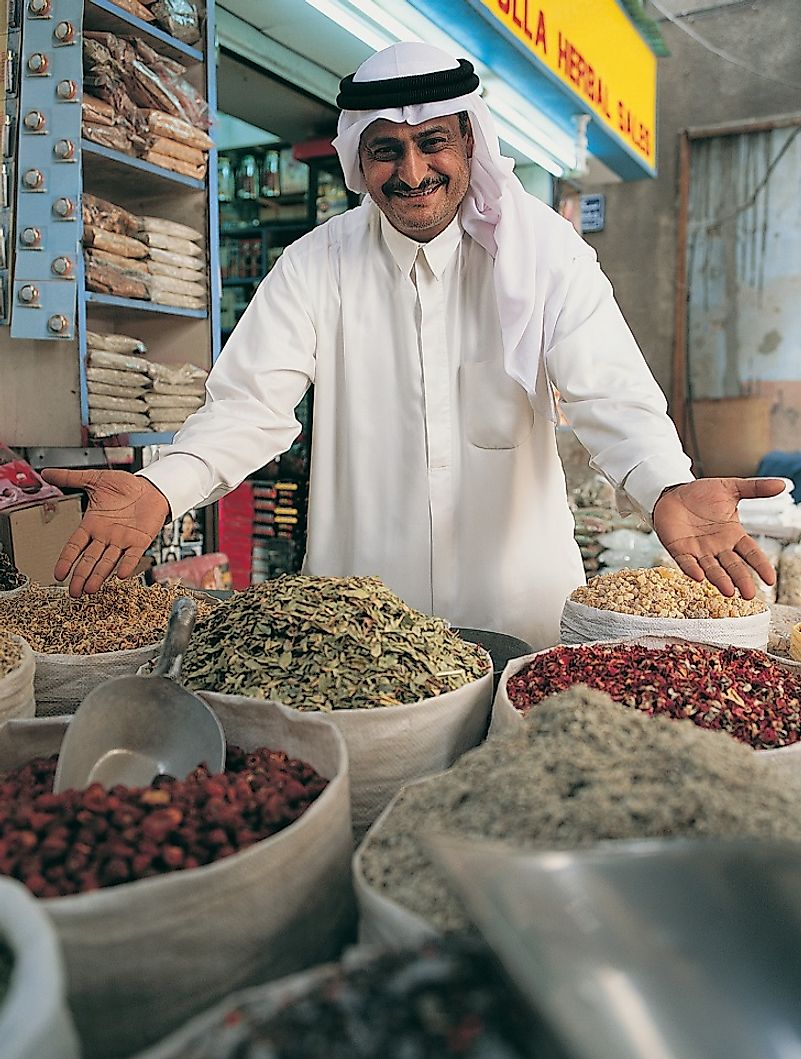Souq Open-Air Marketplaces

5. Where Are Souqs Found?
Souqs are similar to bazaars, and can be found throughout many parts of North Africa, Western Asia, and the Middle East. Souks are part of the culture of Middle Eastern countries such as Morocco, Qatar, Libya, Tunis, Syria, Yemen, Iraq, Jordan, Dubai, Saudi Arabia, the United Arab Emirates, and Jerusalem. Unlike tourist traps that sell only souvenirs, souqs are complexes of products and produce that satisfy the needs of both natives and tourist consumers alike in the Middle East. One can find spices, traditional garments, handicrafts, carpets, rugs, and the ubiquitous souvenirs. Grocery sections, such as those purveying produce, meat, and fish, are also part of the souk experience.
4. Historical Role
There are several nominal variations of the term Souq, such as souk, suk, sooq, suq, shuk, shooq, soq, or esouk. In Iran and Turkey, souqs are known as bazaars. Some souqs such as those of the Al-Madina in Aleppo, Syria, date back as far as the 14th Century, while others developed over spans of time ranging from merely a century ago, such as the Al Souq in Doha, Qatar, to the Souq Okaz in Saudi Arabia, which goes back to 542 CE. Essentially, souqs developed as a trading market for goods offloaded from ships or from desert caravans that trade as far as India and China. The Silk Road was one of the traditional routes for acquiring such souq products as silk and spices. The Al-Madina is a roofed souq, while the Al Souq is an open-air market.
3. Notable Modern Souqs
Most modern souqs today have been built over or next to historic souqs. Modern versions have more to offer in addition to their traditional goods and services. They are also semi to permanently housed in modern buildings that do business year round. They also feature poetry, artwork, sporting events, and lectures. Examples of these modern souqs are the Souq Okaz in Saudi Arabia, the Central Market in Abu Dhabi, the Gold Souq in the United Arab Emirates, the Perfume Souq in Deira, and the Textile souq in Dubai. Examples of Ultra-modern souqs are the Souq Waqif, the Souk Madinat in Jumeirah, the Khan Murjan at Dubai Wafi City, and the Souk Al Bahar of Downtown Dubai.
2. Regional Variations
Souks were traditionally located outside of cities or settlements but due to development and convenience, they started moving to urban areas. The 19th and 20th Centuries saw the modern souqs develop into a more diversified trading and business center. Unlike modern malls and department stores, souqs are famous for bargaining prices. Regional souqs serve different cultures and therefore have festivals and wresting events with the traditional Islamic religious festivals that include poetry competitions. These souqs are now permanent as they occupied buildings such as the Al-Madina in Syria which is about 8 miles long, and therefore the largest covered market in the world. In 1986, it was declared as a UNESCO site.
1. Life as a Souq Vendor
The enthusiasm of souq vendors, especially those who are experts in the art of haggling and bargaining with their customers, makes for a different kind of shopping experience. Most souq vendors are the business owners themselves, and share their expertise. They are organized by their trades into market sections, such as fur products, herbs, cotton products, spices, textiles, foodstuffs, raw leather, jewelry, and much more. The sound and smell of a souq complements the daily life of a souq vendor. Perfumery, spice, and textile shops offer color and scents, while the sales pitches of vendors as they call out their wares and the delicious aromas coming from sweet shops add to the atmosphere. All these give a truly unique experience for the customer as well as the vendor.







